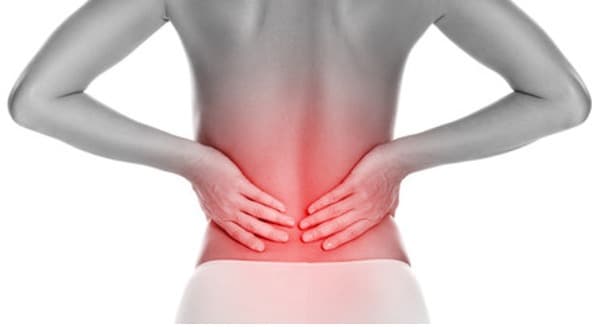Back pain is a common issue that affects millions of people worldwide. Whether it’s a dull ache from sitting too long or a sharp pain that limits mobility, back discomfort can interfere with daily life, work productivity, and mental well-being. The good news? There are plenty of solutions available. But with so many options out there, how do you know which back pain treatment is best for your unique needs?
In this blog, we’ll walk you through a practical, easy-to-follow approach to finding the right back pain treatment tailored specifically to your condition, lifestyle, and preferences.
Understanding the Root of Your Back Pain
Before you choose any form of treatment, it’s important to understand why you’re experiencing back pain in the first place. There are many possible causes, including
- Poor posture
- Muscle strain
- Herniated discs
- Sciatica
- Arthritis, stress, or tension
- Lack of exercise
Knowing the root cause of your back pain will help you and your healthcare provider determine which back pain treatment method will be the most effective and safe for your condition.
When Should You Seek Professional Help?
While occasional backaches can be managed with rest and simple home remedies, some signs indicate the need to consult a professional:
- Pain lasting more than a few weeks
- Numbness or tingling in the legs
- Loss of bladder or bowel control
- Sudden, severe pain without obvious cause
- Pain following an accident or injury
If you experience any of the above, it’s crucial to seek medical advice before starting any treatment.
1. Start with Lifestyle Adjustments
In many cases, small lifestyle changes can provide significant relief from mild to moderate back pain. These include:
a) Improving Posture
Sitting hunched over a computer or slouching while standing can put excessive pressure on the spine. Investing in an ergonomic chair or standing desk and practicing good posture can reduce strain.
b) Staying Active
Contrary to what many believe, prolonged bed rest can worsen back pain. Gentle activities like walking, yoga, or swimming help strengthen the muscles that support your spine.
c) Maintaining a Healthy Weight
Excess weight, especially around the abdomen, can add stress to the lower back. A balanced diet and regular exercise can make a big difference in reducing pain.
2. Explore Physical Therapy
Physical therapy is one of the most recommended forms of back pain treatment for both acute and chronic conditions. A trained physical therapist will:
- Assess your posture, mobility, and strength.
- Create a customized exercise program.
- Teach stretching and strengthening techniques.
- Help improve flexibility and reduce stiffness.
Consistent sessions can help you regain function and reduce the likelihood of future injuries.
3. Consider Alternative Therapies
Complementary therapies have grown in popularity as more people seek natural and holistic approaches to pain management. Some popular options include
a) Chiropractic Care
Chiropractors focus on diagnosing and treating musculoskeletal issues, particularly those related to the spine. Through manual spinal adjustments, they aim to improve alignment, reduce nerve pressure, and enhance overall mobility. Many patients report significant pain relief, better posture, and improved physical function after only a few chiropractic sessions, making it a popular alternative therapy.
b) Acupuncture
Acupuncture, an ancient Chinese healing technique, involves inserting fine needles into targeted body points to balance the body’s energy (Qi), alleviate pain, reduce inflammation, and promote overall well-being.
c) Massage Therapy
Therapeutic massage can relieve muscle tension, improve blood flow, and promote relaxation, making it a helpful addition to your back pain treatment plan.
4. Medications and Injections
For moderate to severe back pain, medications may be necessary to manage symptoms, especially in the short term. Common options include are listed below :
- Over-the-counter pain relievers (like ibuprofen or acetaminophen)
- Muscle relaxants
- Anti-inflammatory drugs
- Corticosteroid injections (for localized pain or inflammation)
Always consult a doctor before taking new medications or undergoing injections. These treatments are often most effective when combined with physical therapy or lifestyle changes.
5. Surgical Options
Surgery is typically considered a last resort for back pain when all other treatments fail or when there’s a structural issue that can only be corrected surgically. Conditions like spinal stenosis, herniated discs, or deformities may require surgical intervention.
Common surgical procedures include:
- Discectomy
- Laminectomy
- Spinal fusion
While surgery can be highly effective, it also comes with risks and recovery time, so it’s important to weigh the pros and cons with a specialist.
6. Tailoring Treatment to Your Lifestyle
The best back pain treatment is one that fits your individual lifestyle, goals, and preferences. Consider the following questions:
- Do you prefer natural methods or medical intervention?
- How much time can you dedicate to recovery or therapy?
- What’s your pain tolerance and daily activity level?
- Are there financial or insurance limitations to consider?
Being honest about your lifestyle will help you stick with the treatment plan and get better results.
7. Combining Treatments for Best Results
In many cases, the most effective approach is a combination of treatments. For example:
- Physical therapy + massage
- Medication + stretching exercises
- Acupuncture + chiropractic care
The goal is to create a well-rounded treatment plan that addresses both the symptoms and the underlying cause of the pain.
8. Tracking Progress and Making Adjustments
Healing takes time, and it’s important to track your progress. Keep a journal of:
- Pain levels
- Activities that trigger or reduce pain
- Medications taken
- Exercises or treatments used
If you’re not seeing improvement after a few weeks, it may be time to reassess your back pain treatment plan with a professional.
Conclusion
Choosing the right back pain treatment isn’t about finding a one-size-fits-all solution. It’s about understanding your body, exploring your options, and working with trusted professionals to create a plan that supports your long-term health.
The road to recovery may not be instant, but with the right mindset and a personalized approach, you can regain comfort, mobility, and quality of life.
Remember: You don’t have to suffer in silence. There are effective treatments out there—it’s just a matter of finding the right one for you.































